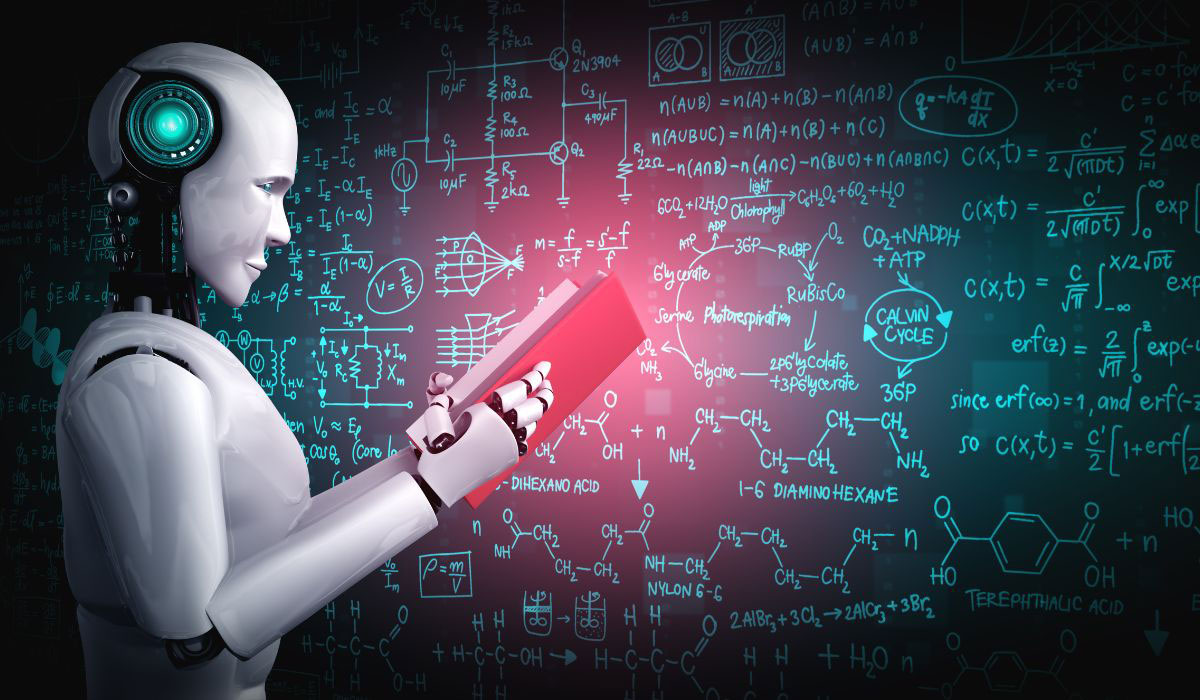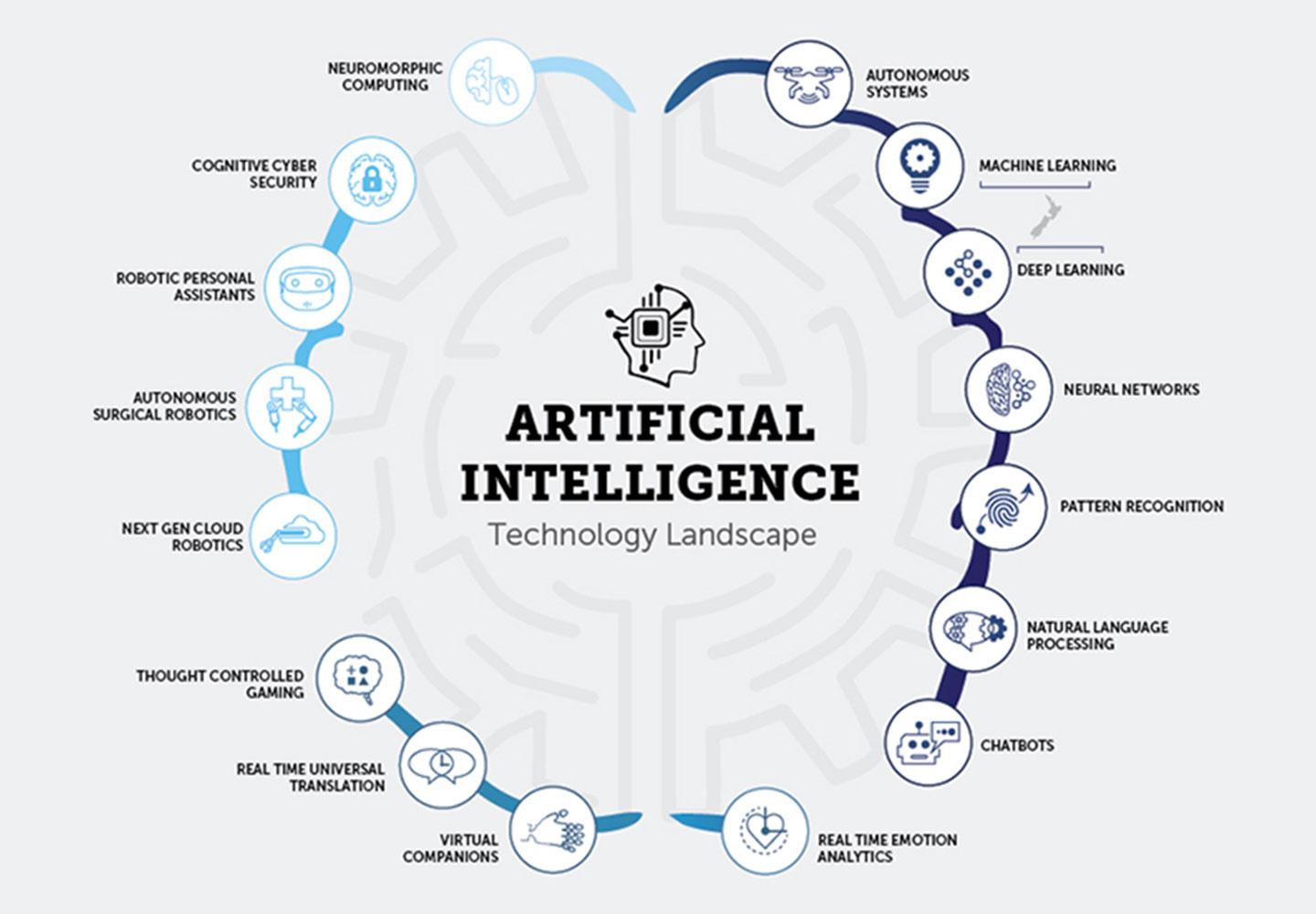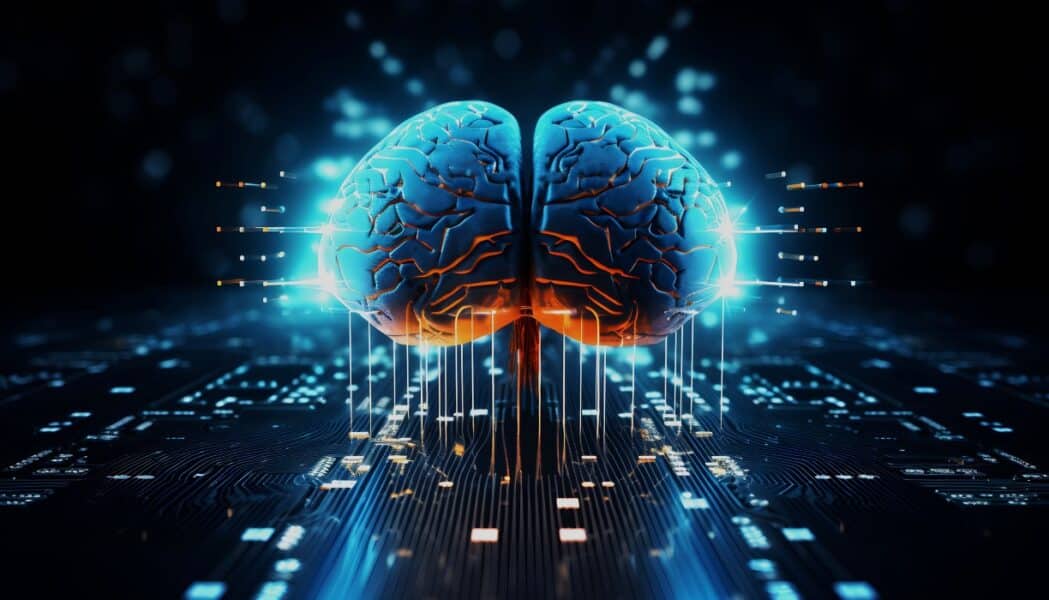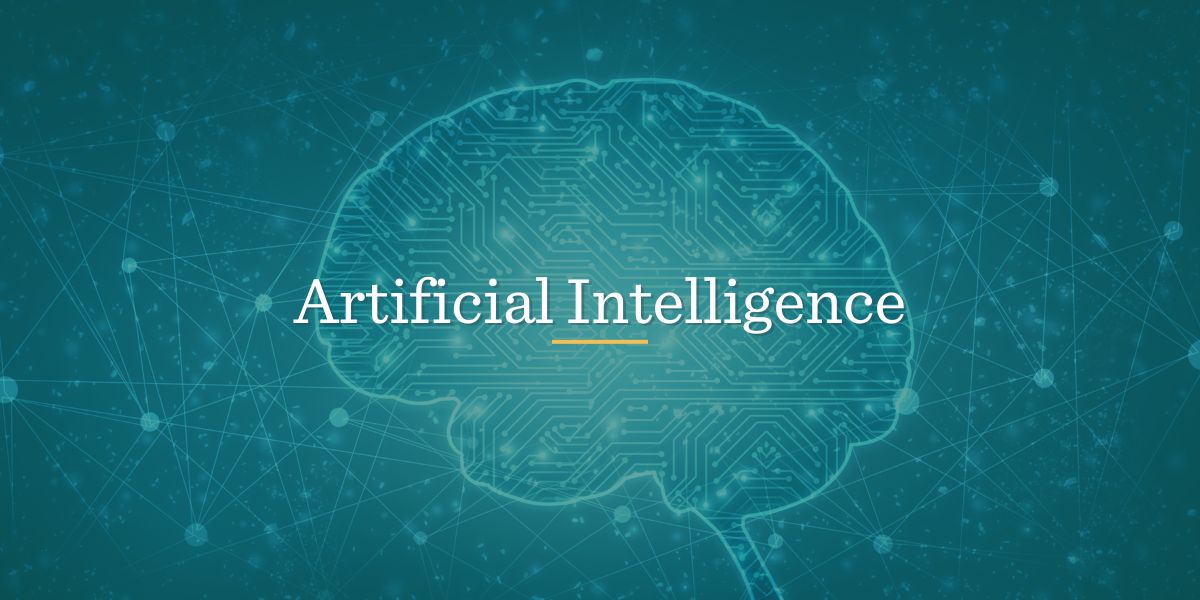
Artificial basic intelligence (AGI) is a type of expert system (AI) that matches or exceeds human cognitive abilities throughout a vast array of cognitive tasks. This contrasts with narrow AI, which is limited to specific jobs. [1] Artificial superintelligence (ASI), on the other hand, describes AGI that considerably goes beyond human cognitive abilities. AGI is thought about one of the meanings of strong AI.
Creating AGI is a main objective of AI research study and of companies such as OpenAI [2] and Meta. [3] A 2020 study determined 72 active AGI research and advancement jobs across 37 countries. [4]
The timeline for attaining AGI remains a subject of ongoing argument amongst scientists and oke.zone professionals. Since 2023, some argue that it might be possible in years or years; others maintain it might take a century or longer; a minority believe it might never be attained; and another minority declares that it is currently here. [5] [6] Notable AI scientist Geoffrey Hinton has actually expressed issues about the quick development towards AGI, recommending it might be achieved quicker than many anticipate. [7]
There is dispute on the precise definition of AGI and regarding whether modern-day big language designs (LLMs) such as GPT-4 are early kinds of AGI. [8] AGI is a typical subject in sci-fi and futures research studies. [9] [10]
Contention exists over whether AGI represents an existential risk. [11] [12] [13] Many experts on AI have stated that mitigating the risk of human extinction posed by AGI should be a worldwide concern. [14] [15] Others find the advancement of AGI to be too remote to provide such a danger. [16] [17]
Terminology
AGI is likewise known as strong AI, [18] [19] complete AI, [20] human-level AI, [5] human-level smart AI, or general smart action. [21]
Some scholastic sources schedule the term "strong AI" for computer programs that experience sentience or consciousness. [a] In contrast, weak AI (or narrow AI) has the ability to solve one specific problem but lacks basic cognitive abilities. [22] [19] Some scholastic sources utilize "weak AI" to refer more broadly to any programs that neither experience consciousness nor have a mind in the very same sense as people. [a]
Related concepts consist of synthetic superintelligence and transformative AI. A synthetic superintelligence (ASI) is a hypothetical type of AGI that is far more normally smart than people, [23] while the idea of transformative AI relates to AI having a big effect on society, for example, comparable to the farming or commercial transformation. [24]
A structure for classifying AGI in levels was proposed in 2023 by Google DeepMind scientists. They define 5 levels of AGI: emerging, proficient, specialist, virtuoso, and superhuman. For example, a competent AGI is specified as an AI that outperforms 50% of proficient adults in a wide variety of non-physical tasks, and a superhuman AGI (i.e. a synthetic superintelligence) is similarly defined but with a limit of 100%. They think about large language designs like ChatGPT or LLaMA 2 to be instances of emerging AGI. [25]
Characteristics
Various popular meanings of intelligence have been proposed. One of the leading proposals is the Turing test. However, there are other well-known definitions, and some scientists disagree with the more popular methods. [b]
Intelligence traits
Researchers generally hold that intelligence is required to do all of the following: [27]
factor, use technique, solve puzzles, and make judgments under uncertainty
represent knowledge, consisting of common sense knowledge
plan
discover
- communicate in natural language
- if necessary, integrate these abilities in completion of any given objective
Many interdisciplinary techniques (e.g. cognitive science, computational intelligence, and decision making) think about additional traits such as imagination (the capability to form novel psychological images and ideas) [28] and autonomy. [29]
Computer-based systems that show numerous of these capabilities exist (e.g. see computational imagination, automated reasoning, decision support group, robot, evolutionary computation, intelligent agent). There is dispute about whether modern-day AI systems have them to an adequate degree.
Physical qualities
Other abilities are considered desirable in smart systems, as they may impact intelligence or aid in its expression. These include: [30]
- the capability to sense (e.g. see, hear, and so on), and
- the capability to act (e.g. move and control things, modification area to check out, etc).
This consists of the capability to find and react to hazard. [31]
Although the capability to sense (e.g. see, hear, etc) and the ability to act (e.g. move and manipulate items, change area to check out, and so on) can be desirable for some smart systems, [30] these physical capabilities are not strictly required for an entity to certify as AGI-particularly under the thesis that large language models (LLMs) may already be or end up being AGI. Even from a less positive perspective on LLMs, there is no firm requirement for an AGI to have a human-like type; being a silicon-based computational system suffices, offered it can process input (language) from the external world in location of human senses. This interpretation aligns with the understanding that AGI has never ever been proscribed a particular physical personification and hence does not require a capability for mobility or traditional "eyes and ears". [32]
Tests for human-level AGI

Several tests suggested to validate human-level AGI have been thought about, consisting of: [33] [34]
The concept of the test is that the device has to try and pretend to be a man, by addressing questions put to it, and it will only pass if the pretence is fairly convincing. A significant portion of a jury, who need to not be expert about makers, should be taken in by the pretence. [37]
AI-complete problems
A problem is informally called "AI-complete" or "AI-hard" if it is thought that in order to solve it, one would need to implement AGI, due to the fact that the option is beyond the capabilities of a purpose-specific algorithm. [47]
There are lots of problems that have been conjectured to need general intelligence to resolve as well as humans. Examples include computer system vision, natural language understanding, and handling unexpected situations while fixing any real-world problem. [48] Even a particular task like translation requires a maker to check out and compose in both languages, follow the author's argument (factor), comprehend the context (understanding), and faithfully recreate the author's original intent (social intelligence). All of these problems need to be resolved simultaneously in order to reach human-level machine efficiency.
However, a lot of these jobs can now be performed by contemporary big language designs. According to Stanford University's 2024 AI index, AI has reached human-level performance on numerous benchmarks for checking out comprehension and visual reasoning. [49]
History
Classical AI
Modern AI research started in the mid-1950s. [50] The first generation of AI scientists were encouraged that artificial general intelligence was possible and that it would exist in simply a few years. [51] AI pioneer Herbert A. Simon composed in 1965: "makers will be capable, within twenty years, of doing any work a male can do." [52]
Their forecasts were the inspiration for Stanley Kubrick and Arthur C. Clarke's character HAL 9000, who embodied what AI scientists thought they could create by the year 2001. AI leader Marvin Minsky was a consultant [53] on the task of making HAL 9000 as sensible as possible according to the consensus forecasts of the time. He said in 1967, "Within a generation ... the problem of developing 'expert system' will significantly be resolved". [54]
Several classical AI jobs, such as Doug Lenat's Cyc task (that began in 1984), and Allen Newell's Soar project, were directed at AGI.
However, in the early 1970s, it became apparent that scientists had grossly undervalued the trouble of the task. Funding companies ended up being doubtful of AGI and put scientists under increasing pressure to produce useful "applied AI". [c] In the early 1980s, Japan's Fifth Generation Computer Project restored interest in AGI, setting out a ten-year timeline that consisted of AGI goals like "carry on a casual discussion". [58] In response to this and the success of expert systems, both market and federal government pumped money into the field. [56] [59] However, confidence in AI amazingly collapsed in the late 1980s, and the goals of the Fifth Generation Computer Project were never ever fulfilled. [60] For the second time in 20 years, AI researchers who anticipated the imminent achievement of AGI had been mistaken. By the 1990s, AI researchers had a reputation for making vain pledges. They ended up being unwilling to make predictions at all [d] and avoided reference of "human level" expert system for worry of being identified "wild-eyed dreamer [s]. [62]
Narrow AI research study
In the 1990s and early 21st century, mainstream AI accomplished commercial success and academic respectability by concentrating on particular sub-problems where AI can produce proven outcomes and industrial applications, such as speech recognition and suggestion algorithms. [63] These "applied AI" systems are now used extensively throughout the technology industry, and research study in this vein is heavily moneyed in both academia and market. As of 2018 [update], advancement in this field was thought about an emerging trend, and a fully grown phase was expected to be reached in more than ten years. [64]
At the millenium, numerous traditional AI scientists [65] hoped that strong AI might be established by integrating programs that fix different sub-problems. Hans Moravec composed in 1988:
I am confident that this bottom-up path to synthetic intelligence will one day satisfy the traditional top-down path majority method, all set to offer the real-world competence and the commonsense knowledge that has been so frustratingly elusive in reasoning programs. Fully smart devices will result when the metaphorical golden spike is driven uniting the 2 efforts. [65]
However, even at the time, this was disputed. For instance, Stevan Harnad of Princeton University concluded his 1990 paper on the sign grounding hypothesis by stating:

The expectation has typically been voiced that "top-down" (symbolic) approaches to modeling cognition will in some way satisfy "bottom-up" (sensory) approaches someplace in between. If the grounding factors to consider in this paper are valid, then this expectation is hopelessly modular and there is actually only one viable route from sense to symbols: from the ground up. A free-floating symbolic level like the software level of a computer will never be reached by this path (or vice versa) - nor is it clear why we ought to even attempt to reach such a level, given that it appears getting there would simply amount to uprooting our signs from their intrinsic significances (thereby merely decreasing ourselves to the functional equivalent of a programmable computer system). [66]
Modern artificial basic intelligence research
The term "artificial basic intelligence" was used as early as 1997, by Mark Gubrud [67] in a discussion of the implications of fully automated military production and operations. A mathematical formalism of AGI was proposed by Marcus Hutter in 2000. Named AIXI, the proposed AGI representative maximises "the ability to please objectives in a wide variety of environments". [68] This type of AGI, characterized by the capability to increase a mathematical meaning of intelligence instead of exhibit human-like behaviour, [69] was likewise called universal expert system. [70]
The term AGI was re-introduced and promoted by Shane Legg and Ben Goertzel around 2002. [71] AGI research study activity in 2006 was described by Pei Wang and Ben Goertzel [72] as "producing publications and initial results". The very first summer school in AGI was organized in Xiamen, China in 2009 [73] by the Xiamen university's Artificial Brain Laboratory and OpenCog. The very first university course was provided in 2010 [74] and 2011 [75] at Plovdiv University, Bulgaria by Todor Arnaudov. MIT provided a course on AGI in 2018, organized by Lex Fridman and featuring a number of visitor lecturers.

Since 2023 [update], a small number of computer researchers are active in AGI research study, and numerous add to a series of AGI conferences. However, increasingly more researchers have an interest in open-ended knowing, [76] [77] which is the concept of enabling AI to constantly discover and innovate like human beings do.
Feasibility
As of 2023, the development and potential achievement of AGI remains a subject of extreme argument within the AI neighborhood. While conventional agreement held that AGI was a distant objective, current advancements have led some researchers and market figures to claim that early kinds of AGI may currently exist. [78] AI pioneer Herbert A. Simon hypothesized in 1965 that "makers will be capable, within twenty years, of doing any work a man can do". This forecast stopped working to come true. Microsoft co-founder Paul Allen thought that such intelligence is not likely in the 21st century since it would need "unforeseeable and basically unforeseeable breakthroughs" and a "clinically deep understanding of cognition". [79] Writing in The Guardian, roboticist Alan Winfield declared the gulf between contemporary computing and human-level synthetic intelligence is as wide as the gulf in between existing area flight and useful faster-than-light spaceflight. [80]
An additional difficulty is the absence of clarity in specifying what intelligence involves. Does it require awareness? Must it display the capability to set objectives in addition to pursue them? Is it purely a matter of scale such that if model sizes increase adequately, intelligence will emerge? Are facilities such as planning, reasoning, and causal understanding needed? Does intelligence require explicitly duplicating the brain and its specific faculties? Does it need feelings? [81]
Most AI researchers believe strong AI can be attained in the future, however some thinkers, like Hubert Dreyfus and Roger Penrose, deny the possibility of achieving strong AI. [82] [83] John McCarthy is amongst those who believe human-level AI will be accomplished, but that the present level of progress is such that a date can not properly be predicted. [84] AI specialists' views on the expediency of AGI wax and wane. Four surveys carried out in 2012 and 2013 recommended that the mean estimate among experts for when they would be 50% confident AGI would get here was 2040 to 2050, depending on the poll, with the mean being 2081. Of the specialists, 16.5% responded to with "never ever" when asked the very same concern however with a 90% confidence instead. [85] [86] Further current AGI development factors to consider can be found above Tests for verifying human-level AGI.
A report by Stuart Armstrong and Kaj Sotala of the Machine Intelligence Research Institute found that "over [a] 60-year amount of time there is a strong predisposition towards anticipating the arrival of human-level AI as between 15 and 25 years from the time the forecast was made". They analyzed 95 predictions made between 1950 and 2012 on when human-level AI will happen. [87]
In 2023, Microsoft researchers published an in-depth examination of GPT-4. They concluded: "Given the breadth and depth of GPT-4's capabilities, our company believe that it might fairly be considered as an early (yet still insufficient) variation of an artificial basic intelligence (AGI) system." [88] Another study in 2023 reported that GPT-4 exceeds 99% of humans on the Torrance tests of creativity. [89] [90]
Blaise Agüera y Arcas and Peter Norvig composed in 2023 that a considerable level of general intelligence has actually already been achieved with frontier models. They wrote that hesitation to this view comes from four primary reasons: a "healthy uncertainty about metrics for AGI", an "ideological dedication to alternative AI theories or techniques", a "devotion to human (or biological) exceptionalism", or a "concern about the economic implications of AGI". [91]
2023 likewise marked the development of large multimodal designs (big language designs capable of processing or producing several methods such as text, audio, and images). [92]
In 2024, OpenAI launched o1-preview, the very first of a series of models that "spend more time believing before they react". According to Mira Murati, this capability to think before responding represents a new, extra paradigm. It improves model outputs by spending more computing power when creating the response, whereas the model scaling paradigm improves outputs by increasing the model size, training information and training compute power. [93] [94]
An OpenAI employee, Vahid Kazemi, declared in 2024 that the business had attained AGI, stating, "In my viewpoint, we have already achieved AGI and it's even more clear with O1." Kazemi clarified that while the AI is not yet "better than any human at any job", it is "better than many people at most jobs." He also addressed criticisms that large language designs (LLMs) simply follow predefined patterns, comparing their learning procedure to the scientific method of observing, assuming, and verifying. These declarations have stimulated dispute, as they count on a broad and unconventional definition of AGI-traditionally understood as AI that matches human intelligence throughout all domains. Critics argue that, while OpenAI's models show remarkable versatility, they might not totally satisfy this standard. Notably, Kazemi's remarks came quickly after OpenAI removed "AGI" from the terms of its collaboration with Microsoft, prompting speculation about the company's strategic objectives. [95]
Timescales
Progress in synthetic intelligence has actually traditionally gone through periods of fast development separated by periods when development appeared to stop. [82] Ending each hiatus were basic advances in hardware, software application or both to create space for more development. [82] [98] [99] For instance, the computer hardware readily available in the twentieth century was not adequate to carry out deep learning, which needs great deals of GPU-enabled CPUs. [100]
In the intro to his 2006 book, [101] Goertzel states that quotes of the time needed before a genuinely flexible AGI is developed differ from ten years to over a century. As of 2007 [upgrade], the agreement in the AGI research study community seemed to be that the timeline talked about by Ray Kurzweil in 2005 in The Singularity is Near [102] (i.e. between 2015 and 2045) was plausible. [103] Mainstream AI researchers have actually offered a large range of opinions on whether progress will be this fast. A 2012 meta-analysis of 95 such viewpoints discovered a bias towards anticipating that the start of AGI would happen within 16-26 years for contemporary and historic forecasts alike. That paper has actually been criticized for how it categorized opinions as expert or non-expert. [104]
In 2012, Alex Krizhevsky, Ilya Sutskever, and Geoffrey Hinton established a neural network called AlexNet, which won the ImageNet competition with a top-5 test error rate of 15.3%, substantially better than the second-best entry's rate of 26.3% (the standard approach used a weighted amount of scores from various pre-defined classifiers). [105] AlexNet was considered the initial ground-breaker of the current deep learning wave. [105]
In 2017, scientists Feng Liu, Yong Shi, and Ying Liu carried out intelligence tests on publicly available and freely available weak AI such as Google AI, Apple's Siri, and others. At the maximum, these AIs reached an IQ worth of about 47, which corresponds roughly to a six-year-old kid in first grade. A grownup pertains to about 100 typically. Similar tests were performed in 2014, with the IQ rating reaching a maximum value of 27. [106] [107]
In 2020, OpenAI established GPT-3, a language design efficient in carrying out many diverse tasks without particular training. According to Gary Grossman in a VentureBeat post, while there is agreement that GPT-3 is not an example of AGI, it is considered by some to be too advanced to be classified as a narrow AI system. [108]
In the same year, Jason Rohrer utilized his GPT-3 account to establish a chatbot, and offered a chatbot-developing platform called "Project December". OpenAI asked for modifications to the chatbot to comply with their security guidelines; Rohrer disconnected Project December from the GPT-3 API. [109]
In 2022, DeepMind developed Gato, a "general-purpose" system efficient in performing more than 600 different tasks. [110]
In 2023, Microsoft Research released a study on an early variation of OpenAI's GPT-4, contending that it showed more basic intelligence than previous AI models and demonstrated human-level performance in tasks covering several domains, such as mathematics, coding, and law. This research study stimulated an argument on whether GPT-4 could be considered an early, insufficient variation of artificial basic intelligence, highlighting the need for further expedition and evaluation of such systems. [111]
In 2023, the AI scientist Geoffrey Hinton mentioned that: [112]
The idea that this stuff might actually get smarter than individuals - a few individuals believed that, [...] But the majority of people believed it was method off. And I thought it was way off. I thought it was 30 to 50 years and even longer away. Obviously, I no longer think that.
In May 2023, Demis Hassabis likewise stated that "The development in the last couple of years has actually been pretty unbelievable", which he sees no reason that it would decrease, anticipating AGI within a decade or even a few years. [113] In March 2024, Nvidia's CEO, Jensen Huang, stated his expectation that within 5 years, AI would can passing any test a minimum of along with people. [114] In June 2024, the AI researcher Leopold Aschenbrenner, a previous OpenAI staff member, approximated AGI by 2027 to be "strikingly possible". [115]
Whole brain emulation
While the development of transformer designs like in ChatGPT is thought about the most appealing course to AGI, [116] [117] whole brain emulation can function as an alternative approach. With entire brain simulation, a brain model is constructed by scanning and mapping a biological brain in information, and after that copying and replicating it on a computer system or another computational gadget. The simulation model should be sufficiently loyal to the initial, so that it acts in virtually the very same way as the original brain. [118] Whole brain emulation is a type of brain simulation that is gone over in computational neuroscience and neuroinformatics, and for medical research functions. It has actually been talked about in artificial intelligence research study [103] as an approach to strong AI. Neuroimaging innovations that might deliver the required detailed understanding are improving quickly, and futurist Ray Kurzweil in the book The Singularity Is Near [102] forecasts that a map of adequate quality will end up being readily available on a similar timescale to the computing power required to replicate it.
Early estimates

For low-level brain simulation, a very powerful cluster of computers or GPUs would be needed, provided the massive quantity of synapses within the human brain. Each of the 1011 (one hundred billion) neurons has on typical 7,000 synaptic connections (synapses) to other nerve cells. The brain of a three-year-old kid has about 1015 synapses (1 quadrillion). This number declines with age, stabilizing by their adult years. Estimates differ for an adult, ranging from 1014 to 5 × 1014 synapses (100 to 500 trillion). [120] A quote of the brain's processing power, based upon an easy switch model for nerve cell activity, is around 1014 (100 trillion) synaptic updates per second (SUPS). [121]
In 1997, Kurzweil took a look at numerous price quotes for the hardware required to equal the human brain and embraced a figure of 1016 calculations per second (cps). [e] (For comparison, if a "computation" was equivalent to one "floating-point operation" - a measure utilized to rate current supercomputers - then 1016 "computations" would be comparable to 10 petaFLOPS, accomplished in 2011, while 1018 was attained in 2022.) He used this figure to anticipate the required hardware would be offered sometime between 2015 and 2025, if the rapid development in computer system power at the time of writing continued.
Current research
The Human Brain Project, an EU-funded effort active from 2013 to 2023, has developed a particularly in-depth and openly accessible atlas of the human brain. [124] In 2023, scientists from Duke University carried out a high-resolution scan of a mouse brain.
Criticisms of simulation-based techniques
The synthetic nerve cell model assumed by Kurzweil and used in lots of existing synthetic neural network executions is easy compared with biological neurons. A brain simulation would likely need to record the comprehensive cellular behaviour of biological neurons, currently understood just in broad outline. The overhead presented by complete modeling of the biological, chemical, and physical information of neural behaviour (specifically on a molecular scale) would need computational powers several orders of magnitude bigger than Kurzweil's price quote. In addition, the price quotes do not account for glial cells, which are known to contribute in cognitive processes. [125]
A basic criticism of the simulated brain method stems from embodied cognition theory which asserts that human embodiment is an essential element of human intelligence and is necessary to ground significance. [126] [127] If this theory is proper, any fully functional brain model will require to incorporate more than simply the neurons (e.g., a robotic body). Goertzel [103] proposes virtual personification (like in metaverses like Second Life) as an option, however it is unknown whether this would be enough.
Philosophical perspective
"Strong AI" as defined in viewpoint
In 1980, philosopher John Searle coined the term "strong AI" as part of his Chinese space argument. [128] He proposed a difference in between two hypotheses about expert system: [f]
Strong AI hypothesis: An expert system system can have "a mind" and "awareness".
Weak AI hypothesis: An expert system system can (only) imitate it thinks and has a mind and consciousness.
The very first one he called "strong" since it makes a more powerful statement: it presumes something special has taken place to the machine that exceeds those abilities that we can test. The behaviour of a "weak AI" maker would be specifically similar to a "strong AI" maker, however the latter would likewise have subjective conscious experience. This usage is also common in academic AI research and books. [129]
In contrast to Searle and traditional AI, some futurists such as Ray Kurzweil use the term "strong AI" to mean "human level artificial basic intelligence". [102] This is not the exact same as Searle's strong AI, unless it is assumed that awareness is needed for human-level AGI. Academic thinkers such as Searle do not believe that holds true, and to most synthetic intelligence scientists the concern is out-of-scope. [130]
Mainstream AI is most thinking about how a program behaves. [131] According to Russell and Norvig, "as long as the program works, they do not care if you call it real or a simulation." [130] If the program can behave as if it has a mind, then there is no need to understand if it in fact has mind - undoubtedly, there would be no chance to tell. For AI research study, Searle's "weak AI hypothesis" is comparable to the statement "synthetic general intelligence is possible". Thus, according to Russell and Norvig, "most AI scientists take the weak AI hypothesis for given, and do not care about the strong AI hypothesis." [130] Thus, for academic AI research, "Strong AI" and "AGI" are 2 different things.
Consciousness
Consciousness can have various significances, and some aspects play considerable roles in sci-fi and the ethics of expert system:
Sentience (or "extraordinary consciousness"): The ability to "feel" understandings or feelings subjectively, as opposed to the ability to factor about perceptions. Some theorists, such as David Chalmers, utilize the term "awareness" to refer solely to sensational consciousness, which is approximately equivalent to sentience. [132] Determining why and how subjective experience emerges is called the hard problem of consciousness. [133] Thomas Nagel described in 1974 that it "feels like" something to be conscious. If we are not mindful, then it doesn't feel like anything. Nagel utilizes the example of a bat: we can smartly ask "what does it seem like to be a bat?" However, we are unlikely to ask "what does it seem like to be a toaster?" Nagel concludes that a bat seems conscious (i.e., has consciousness) however a toaster does not. [134] In 2022, a Google engineer claimed that the company's AI chatbot, LaMDA, had achieved sentience, though this claim was extensively challenged by other professionals. [135]
Self-awareness: To have conscious awareness of oneself as a different individual, particularly to be knowingly familiar with one's own ideas. This is opposed to just being the "subject of one's believed"-an operating system or debugger has the ability to be "familiar with itself" (that is, to represent itself in the exact same method it represents whatever else)-but this is not what people generally indicate when they use the term "self-awareness". [g]
These traits have a moral dimension. AI sentience would generate issues of well-being and legal defense, likewise to animals. [136] Other aspects of awareness related to cognitive abilities are likewise appropriate to the principle of AI rights. [137] Determining how to incorporate innovative AI with existing legal and social frameworks is an emerging problem. [138]
Benefits

AGI could have a variety of applications. If oriented towards such goals, AGI could assist mitigate different problems worldwide such as cravings, hardship and illness. [139]
AGI might enhance productivity and effectiveness in a lot of jobs. For example, in public health, AGI could accelerate medical research study, notably against cancer. [140] It could look after the senior, [141] and equalize access to fast, high-quality medical diagnostics. It could provide fun, low-cost and personalized education. [141] The need to work to subsist might end up being outdated if the wealth produced is appropriately redistributed. [141] [142] This also raises the concern of the location of humans in a significantly automated society.
AGI might likewise assist to make rational choices, and to anticipate and avoid disasters. It could also help to gain the advantages of possibly disastrous technologies such as nanotechnology or climate engineering, while avoiding the associated threats. [143] If an AGI's main goal is to avoid existential catastrophes such as human extinction (which could be tough if the Vulnerable World Hypothesis turns out to be true), [144] it could take measures to dramatically decrease the dangers [143] while reducing the effect of these steps on our lifestyle.
Risks

Existential dangers
AGI might represent numerous kinds of existential threat, which are threats that threaten "the early extinction of Earth-originating smart life or the irreversible and drastic destruction of its capacity for desirable future development". [145] The risk of human termination from AGI has been the subject of many arguments, however there is likewise the possibility that the advancement of AGI would result in a permanently problematic future. Notably, it might be utilized to spread and protect the set of worths of whoever develops it. If mankind still has moral blind spots comparable to slavery in the past, AGI might irreversibly entrench it, avoiding ethical development. [146] Furthermore, AGI could facilitate mass security and indoctrination, which might be utilized to create a stable repressive worldwide totalitarian regime. [147] [148] There is also a risk for the machines themselves. If machines that are sentient or otherwise deserving of ethical consideration are mass developed in the future, taking part in a civilizational path that forever ignores their well-being and interests might be an existential disaster. [149] [150] Considering how much AGI might improve humanity's future and help in reducing other existential risks, Toby Ord calls these existential risks "an argument for proceeding with due care", not for "deserting AI". [147]
Risk of loss of control and human extinction
The thesis that AI poses an existential danger for human beings, and that this threat needs more attention, is questionable but has been endorsed in 2023 by numerous public figures, AI scientists and CEOs of AI companies such as Elon Musk, Bill Gates, Geoffrey Hinton, Yoshua Bengio, Demis Hassabis and Sam Altman. [151] [152]
In 2014, Stephen Hawking slammed prevalent indifference:
So, dealing with possible futures of incalculable benefits and dangers, the experts are certainly doing everything possible to ensure the best result, right? Wrong. If a superior alien civilisation sent us a message saying, 'We'll show up in a couple of decades,' would we simply respond, 'OK, call us when you get here-we'll leave the lights on?' Probably not-but this is more or less what is occurring with AI. [153]
The possible fate of humankind has actually often been compared to the fate of gorillas threatened by human activities. The comparison mentions that higher intelligence permitted humanity to control gorillas, which are now susceptible in methods that they might not have expected. As an outcome, the gorilla has ended up being an endangered types, not out of malice, but merely as a collateral damage from human activities. [154]
The skeptic Yann LeCun considers that AGIs will have no desire to control mankind and that we need to beware not to anthropomorphize them and analyze their intents as we would for humans. He stated that individuals will not be "clever enough to create super-intelligent devices, yet unbelievably foolish to the point of offering it moronic objectives with no safeguards". [155] On the other side, the principle of instrumental convergence recommends that almost whatever their goals, intelligent agents will have factors to attempt to make it through and get more power as intermediary actions to achieving these objectives. And that this does not need having emotions. [156]
Many scholars who are concerned about existential threat supporter for more research into fixing the "control problem" to address the question: what kinds of safeguards, algorithms, or architectures can developers carry out to increase the possibility that their recursively-improving AI would continue to behave in a friendly, instead of harmful, way after it reaches superintelligence? [157] [158] Solving the control problem is complicated by the AI arms race (which might lead to a race to the bottom of safety precautions in order to release items before rivals), [159] and the use of AI in weapon systems. [160]
The thesis that AI can position existential risk likewise has critics. Skeptics typically state that AGI is unlikely in the short-term, or that issues about AGI sidetrack from other concerns connected to existing AI. [161] Former Google fraud czar Shuman Ghosemajumder considers that for many individuals outside of the innovation market, existing chatbots and LLMs are currently perceived as though they were AGI, causing more misconception and worry. [162]
Skeptics sometimes charge that the thesis is crypto-religious, with an unreasonable belief in the possibility of superintelligence replacing an unreasonable belief in a supreme God. [163] Some researchers believe that the communication campaigns on AI existential risk by specific AI groups (such as OpenAI, Anthropic, DeepMind, and Conjecture) might be an at attempt at regulative capture and to inflate interest in their items. [164] [165]
In 2023, the CEOs of Google DeepMind, OpenAI and Anthropic, in addition to other industry leaders and scientists, provided a joint declaration asserting that "Mitigating the danger of termination from AI ought to be a worldwide top priority together with other societal-scale threats such as pandemics and nuclear war." [152]
Mass joblessness
Researchers from OpenAI estimated that "80% of the U.S. labor force could have at least 10% of their work tasks impacted by the introduction of LLMs, while around 19% of employees may see at least 50% of their jobs impacted". [166] [167] They consider office workers to be the most exposed, for example mathematicians, accounting professionals or web designers. [167] AGI could have a better autonomy, capability to make choices, to user interface with other computer system tools, however likewise to manage robotized bodies.
According to Stephen Hawking, the outcome of automation on the quality of life will depend on how the wealth will be redistributed: [142]
Everyone can delight in a life of glamorous leisure if the machine-produced wealth is shared, or many people can end up miserably bad if the machine-owners successfully lobby against wealth redistribution. So far, the trend seems to be towards the second option, with innovation driving ever-increasing inequality
Elon Musk thinks about that the automation of society will require federal governments to adopt a universal fundamental income. [168]
See likewise
Artificial brain - Software and hardware with cognitive abilities comparable to those of the animal or human brain
AI impact
AI safety - Research area on making AI safe and helpful
AI alignment - AI conformance to the designated goal
A.I. Rising - 2018 film directed by Lazar Bodroža
Artificial intelligence
Automated maker learning - Process of automating the application of machine learning
BRAIN Initiative - Collaborative public-private research initiative revealed by the Obama administration
China Brain Project
Future of Humanity Institute - Defunct Oxford interdisciplinary research study centre
General game playing - Ability of expert system to play different video games
Generative artificial intelligence - AI system capable of generating material in response to prompts
Human Brain Project - Scientific research task
Intelligence amplification - Use of infotech to augment human intelligence (IA).
Machine principles - Moral behaviours of manufactured makers.
Moravec's paradox.
Multi-task learning - Solving numerous maker discovering jobs at the exact same time.
Neural scaling law - Statistical law in artificial intelligence.
Outline of expert system - Overview of and topical guide to artificial intelligence.
Transhumanism - Philosophical movement.
Synthetic intelligence - Alternate term for or kind of expert system.
Transfer learning - Artificial intelligence strategy.
Loebner Prize - Annual AI competition.
Hardware for synthetic intelligence - Hardware specially developed and enhanced for artificial intelligence.
Weak artificial intelligence - Form of expert system.
Notes
^ a b See listed below for the origin of the term "strong AI", and see the scholastic definition of "strong AI" and weak AI in the post Chinese room.
^ AI creator John McCarthy composes: "we can not yet define in general what kinds of computational treatments we desire to call intelligent. " [26] (For a discussion of some meanings of intelligence used by artificial intelligence researchers, see approach of expert system.).
^ The Lighthill report particularly criticized AI's "grandiose goals" and led the dismantling of AI research in England. [55] In the U.S., DARPA ended up being identified to fund just "mission-oriented direct research study, instead of fundamental undirected research study". [56] [57] ^ As AI creator John McCarthy composes "it would be a terrific relief to the remainder of the employees in AI if the developers of new general formalisms would reveal their hopes in a more secured type than has often held true." [61] ^ In "Mind Children" [122] 1015 cps is utilized. More recently, in 1997, [123] Moravec argued for 108 MIPS which would roughly represent 1014 cps. Moravec talks in regards to MIPS, not "cps", which is a non-standard term Kurzweil presented.
^ As specified in a basic AI book: "The assertion that machines might perhaps act smartly (or, bio.rogstecnologia.com.br possibly better, act as if they were intelligent) is called the 'weak AI' hypothesis by thinkers, and the assertion that machines that do so are really thinking (as opposed to imitating thinking) is called the 'strong AI' hypothesis." [121] ^ Alan Turing made this point in 1950. [36] References
^ Krishna, Sri (9 February 2023). "What is artificial narrow intelligence (ANI)?". VentureBeat. Retrieved 1 March 2024. ANI is designed to perform a single task.
^ "OpenAI Charter". OpenAI. Retrieved 6 April 2023. Our objective is to guarantee that artificial general intelligence advantages all of mankind.
^ Heath, Alex (18 January 2024). "Mark Zuckerberg's new objective is producing artificial basic intelligence". The Verge. Retrieved 13 June 2024. Our vision is to construct AI that is better than human-level at all of the human senses.
^ Baum, Seth D. (2020 ). A Survey of Artificial General Intelligence Projects for Ethics, Risk, and Policy (PDF) (Report). Global Catastrophic Risk Institute. Retrieved 28 November 2024. 72 AGI R&D projects were recognized as being active in 2020.
^ a b c "AI timelines: What do professionals in expert system anticipate for the future?". Our World in Data. Retrieved 6 April 2023.
^ Metz, Cade (15 May 2023). "Some Researchers Say A.I. Is Already Here, Stirring Debate in Tech Circles". The New York City Times. Retrieved 18 May 2023.
^ "AI leader Geoffrey Hinton stops Google and cautions of threat ahead". The New York Times. 1 May 2023. Retrieved 2 May 2023. It is difficult to see how you can avoid the bad stars from using it for bad things.
^ Bubeck, Sébastien; Chandrasekaran, Varun; Eldan, Ronen; Gehrke, Johannes; Horvitz, Eric (2023 ). "Sparks of Artificial General Intelligence: Early experiments with GPT-4". arXiv preprint. arXiv:2303.12712. GPT-4 reveals triggers of AGI.
^ Butler, Octavia E. (1993 ). Parable of the Sower. Grand Central Publishing. ISBN 978-0-4466-7550-5. All that you touch you change. All that you change changes you.
^ Vinge, Vernor (1992 ). A Fire Upon the Deep. Tor Books. ISBN 978-0-8125-1528-2. The Singularity is coming.
^ Morozov, Evgeny (30 June 2023). "The True Threat of Artificial Intelligence". The New York Times. The genuine hazard is not AI itself however the method we release it.
^ "Impressed by expert system? Experts say AGI is following, and it has 'existential' risks". ABC News. 23 March 2023. Retrieved 6 April 2023. AGI might pose existential dangers to humanity.
^ Bostrom, Nick (2014 ). Superintelligence: Paths, Dangers, Strategies. Oxford University Press. ISBN 978-0-1996-7811-2. The very first superintelligence will be the last innovation that humankind requires to make.
^ Roose, Kevin (30 May 2023). "A.I. Poses 'Risk of Extinction,' Industry Leaders Warn". The New York Times. Mitigating the risk of termination from AI must be an international concern.
^ "Statement on AI Risk". Center for AI Safety. Retrieved 1 March 2024. AI professionals alert of danger of extinction from AI.
^ Mitchell, Melanie (30 May 2023). "Are AI's Doomsday Scenarios Worth Taking Seriously?". The New York Times. We are far from producing makers that can outthink us in basic ways.
^ LeCun, Yann (June 2023). "AGI does not present an existential threat". Medium. There is no factor to fear AI as an existential threat.
^ Kurzweil 2005, p. 260.
^ a b Kurzweil, Ray (5 August 2005), "Long Live AI", Forbes, archived from the initial on 14 August 2005: Kurzweil describes strong AI as "device intelligence with the full variety of human intelligence.".
^ "The Age of Expert System: George John at TEDxLondonBusinessSchool 2013". Archived from the original on 26 February 2014. Retrieved 22 February 2014.
^ Newell & Simon 1976, This is the term they use for "human-level" intelligence in the physical sign system hypothesis.
^ "The Open University on Strong and Weak AI". Archived from the initial on 25 September 2009. Retrieved 8 October 2007.
^ "What is artificial superintelligence (ASI)?|Definition from TechTarget". Enterprise AI. Retrieved 8 October 2023.
^ "Artificial intelligence is transforming our world - it is on all of us to ensure that it works out". Our World in Data. Retrieved 8 October 2023.
^ Dickson, Ben (16 November 2023). "Here is how far we are to accomplishing AGI, according to DeepMind". VentureBeat.
^ McCarthy, John (2007a). "Basic Questions". Stanford University. Archived from the initial on 26 October 2007. Retrieved 6 December 2007.
^ This list of smart traits is based on the topics covered by significant AI books, including: Russell & Norvig 2003, Luger & Stubblefield 2004, Poole, Mackworth & Goebel 1998 and Nilsson 1998.
^ Johnson 1987.
^ de Charms, R. (1968 ). Personal causation. New York: Academic Press.
^ a b Pfeifer, R. and Bongard J. C., How the body forms the method we believe: a new view of intelligence (The MIT Press, 2007). ISBN 0-2621-6239-3.
^ White, R. W. (1959 ). "Motivation reevaluated: The idea of competence". Psychological Review. 66 (5 ): 297-333. doi:10.1037/ h0040934. PMID 13844397. S2CID 37385966.
^ White, R. W. (1959 ). "Motivation reevaluated: The concept of competence". Psychological Review. 66 (5 ): 297-333. doi:10.1037/ h0040934. PMID 13844397. S2CID 37385966.
^ Muehlhauser, Luke (11 August 2013). "What is AGI?". Machine Intelligence Research Institute. Archived from the original on 25 April 2014. Retrieved 1 May 2014.
^ "What is Artificial General Intelligence (AGI)?|4 Tests For Ensuring Artificial General Intelligence". Talky Blog. 13 July 2019. Archived from the initial on 17 July 2019. Retrieved 17 July 2019.
^ Kirk-Giannini, Cameron Domenico; Goldstein, Simon (16 October 2023). "AI is closer than ever to passing the Turing test for 'intelligence'. What happens when it does?". The Conversation. Retrieved 22 September 2024.
^ a b Turing 1950.
^ Turing, Alan (1952 ). B. Jack Copeland (ed.). Can Automatic Calculating Machines Be Said To Think?. Oxford: Oxford University Press. pp. 487-506. ISBN 978-0-1982-5079-1.
^ "Eugene Goostman is a real boy - the Turing Test says so". The Guardian. 9 June 2014. ISSN 0261-3077. Retrieved 3 March 2024.
^ "Scientists dispute whether computer 'Eugene Goostman' passed Turing test". BBC News. 9 June 2014. Retrieved 3 March 2024.
^ Jones, Cameron R.; Bergen, Benjamin K. (9 May 2024). "People can not identify GPT-4 from a human in a Turing test". arXiv:2405.08007 [cs.HC]
^ Varanasi, Lakshmi (21 March 2023). "AI models like ChatGPT and GPT-4 are acing everything from the bar test to AP Biology. Here's a list of challenging exams both AI variations have passed". Business Insider. Retrieved 30 May 2023.
^ Naysmith, Caleb (7 February 2023). "6 Jobs Expert System Is Already Replacing and How Investors Can Profit From It". Retrieved 30 May 2023.
^ Turk, Victoria (28 January 2015). "The Plan to Replace the Turing Test with a 'Turing Olympics'". Vice. Retrieved 3 March 2024.
^ Gopani, Avi (25 May 2022). "Turing Test is undependable. The Winograd Schema is outdated. Coffee is the answer". Analytics India Magazine. Retrieved 3 March 2024.
^ Bhaimiya, Sawdah (20 June 2023). "DeepMind's co-founder recommended checking an AI chatbot's capability to turn $100,000 into $1 million to determine human-like intelligence". Business Insider. Retrieved 3 March 2024.
^ Suleyman, Mustafa (14 July 2023). "Mustafa Suleyman: My new Turing test would see if AI can make $1 million". MIT Technology Review. Retrieved 3 March 2024.
^ Shapiro, Stuart C. (1992 ). "Expert System" (PDF). In Stuart C. Shapiro (ed.). Encyclopedia of Expert System (Second ed.). New York: John Wiley. pp. 54-57. Archived (PDF) from the initial on 1 February 2016. (Section 4 is on "AI-Complete Tasks".).
^ Yampolskiy, Roman V. (2012 ). Xin-She Yang (ed.). "Turing Test as a Defining Feature of AI-Completeness" (PDF). Artificial Intelligence, Evolutionary Computation and Metaheuristics (AIECM): 3-17. Archived (PDF) from the initial on 22 May 2013.
^ "AI Index: State of AI in 13 Charts". Stanford University Human-Centered Artificial Intelligence. 15 April 2024. Retrieved 27 May 2024.
^ Crevier 1993, pp. 48-50.
^ Kaplan, Andreas (2022 ). "Artificial Intelligence, Business and Civilization - Our Fate Made in Machines". Archived from the original on 6 May 2022. Retrieved 12 March 2022.
^ Simon 1965, p. 96 priced quote in Crevier 1993, p. 109.
^ "Scientist on the Set: An Interview with Marvin Minsky". Archived from the original on 16 July 2012. Retrieved 5 April 2008.
^ Marvin Minsky to Darrach (1970 ), priced quote in Crevier (1993, p. 109).
^ Lighthill 1973; Howe 1994.
^ a b NRC 1999, "Shift to Applied Research Increases Investment".
^ Crevier 1993, pp. 115-117; Russell & Norvig 2003, pp. 21-22.
^ Crevier 1993, p. 211, Russell & Norvig 2003, p. 24 and see likewise Feigenbaum & McCorduck 1983.
^ Crevier 1993, pp. 161-162, 197-203, 240; Russell & Norvig 2003, p. 25.
^ Crevier 1993, pp. 209-212.
^ McCarthy, John (2000 ). "Reply to Lighthill". Stanford University. Archived from the original on 30 September 2008. Retrieved 29 September 2007.
^ Markoff, John (14 October 2005). "Behind Artificial Intelligence, a Squadron of Bright Real People". The New York Times. Archived from the initial on 2 February 2023. Retrieved 18 February 2017. At its low point, some computer system researchers and software engineers avoided the term expert system for worry of being deemed wild-eyed dreamers.
^ Russell & Norvig 2003, pp. 25-26
^ "Trends in the Emerging Tech Hype Cycle". Gartner Reports. Archived from the original on 22 May 2019. Retrieved 7 May 2019.
^ a b Moravec 1988, p. 20
^ Harnad, S. (1990 ). "The Symbol Grounding Problem". Physica D. 42 (1-3): 335-346. arXiv: cs/9906002. Bibcode:1990 PhyD ... 42..335 H. doi:10.1016/ 0167-2789( 90 )90087-6. S2CID 3204300.
^ Gubrud 1997
^ Hutter, Marcus (2005 ). Universal Expert System: Sequential Decisions Based Upon Algorithmic Probability. Texts in Theoretical Computer Technology an EATCS Series. Springer. doi:10.1007/ b138233. ISBN 978-3-5402-6877-2. S2CID 33352850. Archived from the initial on 19 July 2022. Retrieved 19 July 2022.
^ Legg, Shane (2008 ). Machine Super Intelligence (PDF) (Thesis). University of Lugano. Archived (PDF) from the original on 15 June 2022. Retrieved 19 July 2022.
^ Goertzel, Ben (2014 ). Artificial General Intelligence. Lecture Notes in Computer Technology. Vol. 8598. Journal of Artificial General Intelligence. doi:10.1007/ 978-3-319-09274-4. ISBN 978-3-3190-9273-7. S2CID 8387410.
^ "Who created the term "AGI"?". goertzel.org. Archived from the initial on 28 December 2018. Retrieved 28 December 2018., through Life 3.0: 'The term "AGI" was promoted by ... Shane Legg, Mark Gubrud and Ben Goertzel'
^ Wang & Goertzel 2007
^ "First International Summer School in Artificial General Intelligence, Main summer season school: June 22 - July 3, 2009, OpenCog Lab: July 6-9, 2009". Archived from the original on 28 September 2020. Retrieved 11 May 2020.
^ "Избираеми дисциплини 2009/2010 - пролетен триместър" [Elective courses 2009/2010 - spring trimester] Факултет по математика и информатика [Faculty of Mathematics and Informatics] (in Bulgarian). Archived from the initial on 26 July 2020. Retrieved 11 May 2020.
^ "Избираеми дисциплини 2010/2011 - зимен триместър" [Elective courses 2010/2011 - winter trimester] Факултет по математика и информатика [Faculty of Mathematics and Informatics] (in Bulgarian). Archived from the original on 26 July 2020. Retrieved 11 May 2020.
^ Shevlin, Henry; Vold, Karina; Crosby, Matthew; Halina, Marta (4 October 2019). "The limitations of maker intelligence: akropolistravel.com De







